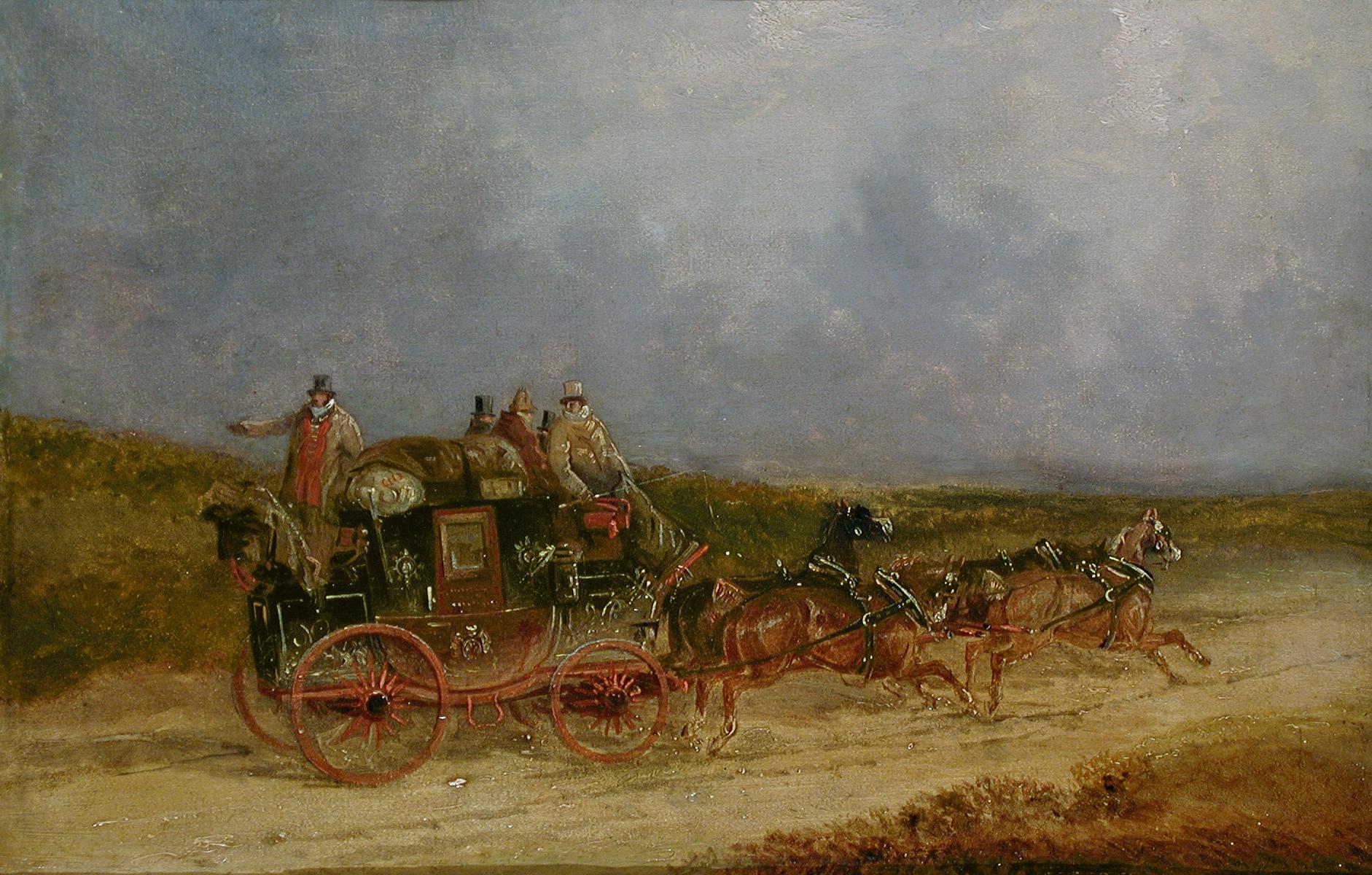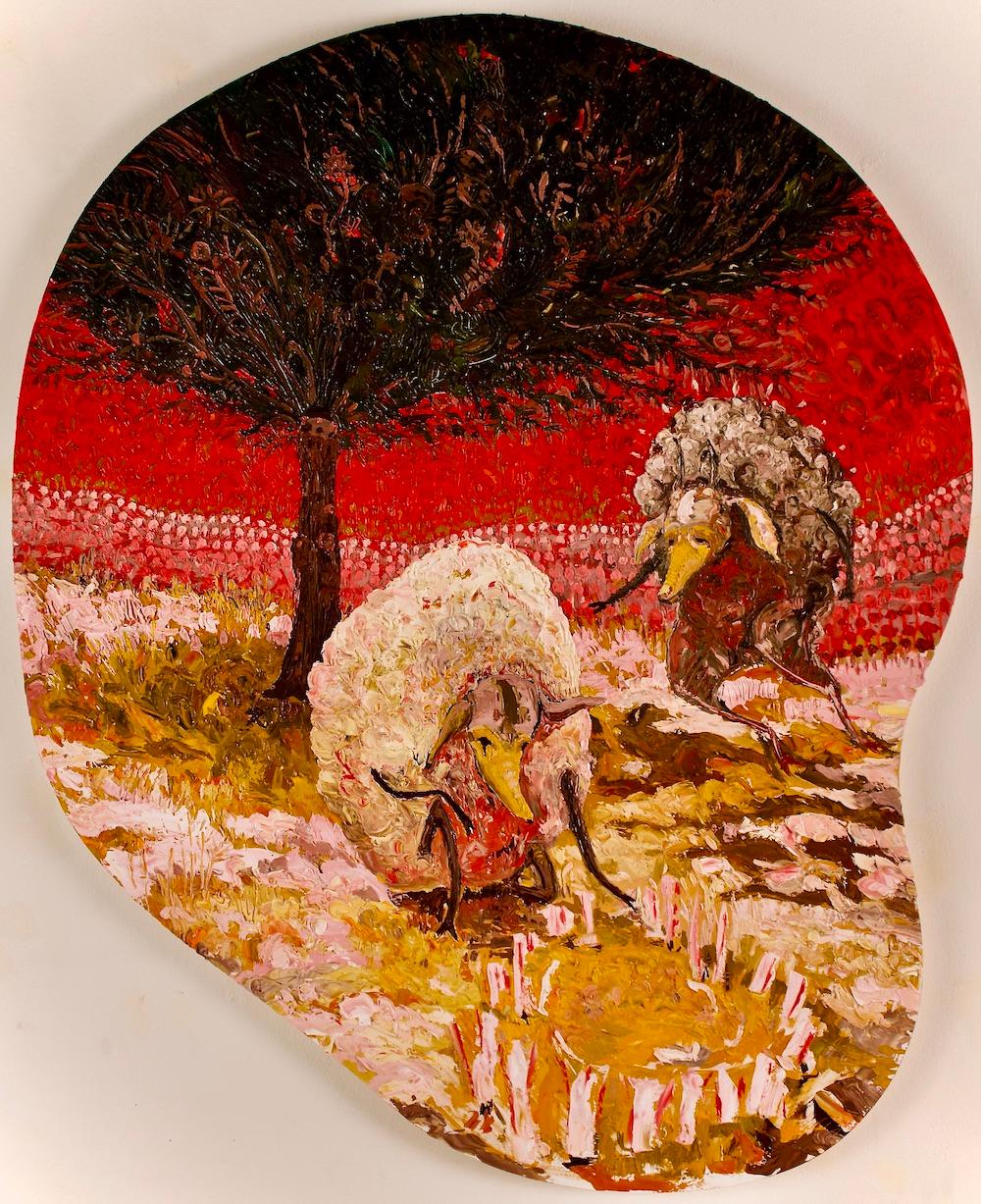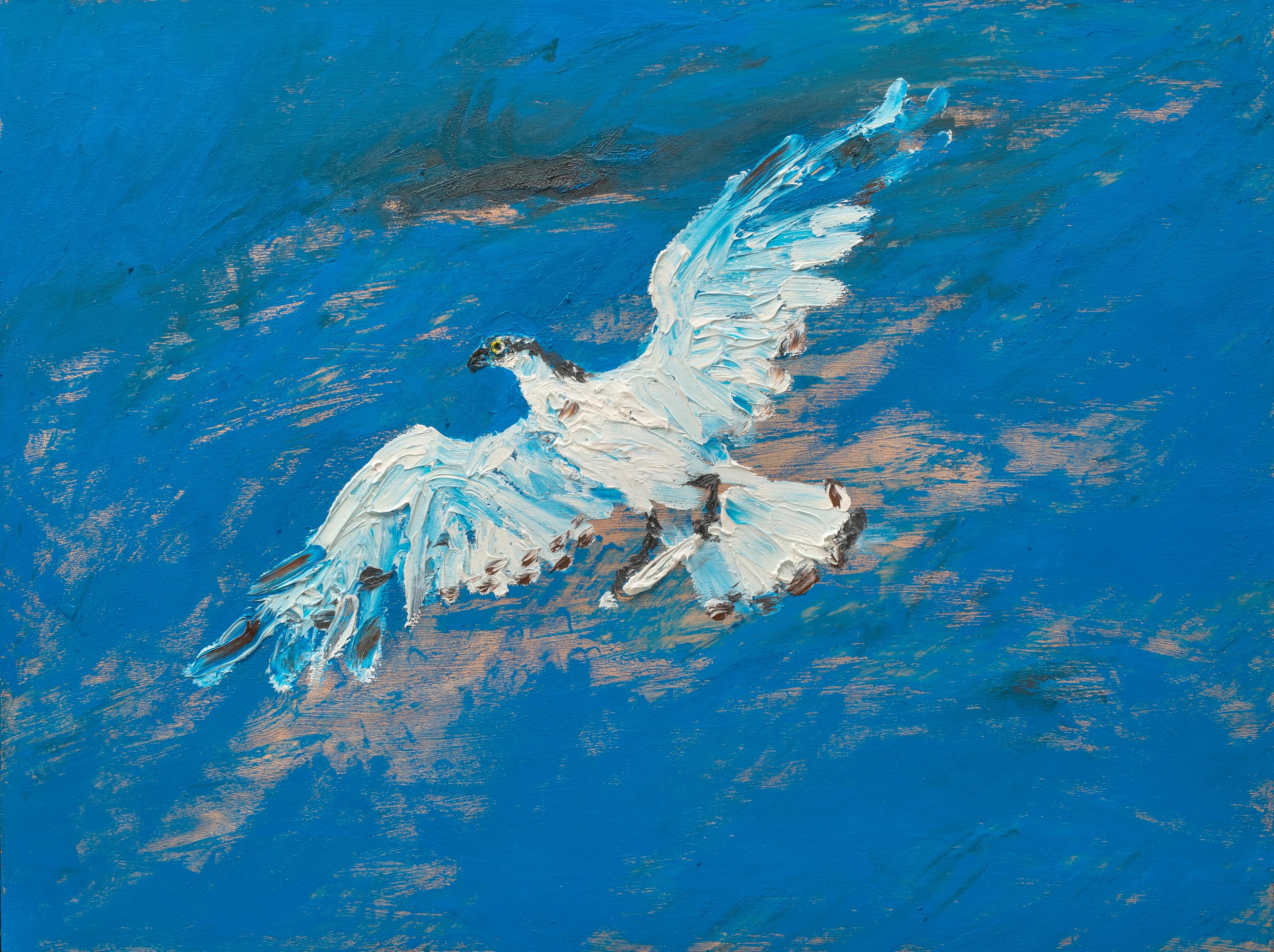Items Similar to Two Pumas in a Landscape
Want more images or videos?
Request additional images or videos from the seller
1 of 5
William HugginsTwo Pumas in a Landscape1840
1840
About the Item
William Huggins (1820 - 1884)
Two pumas in a landscape
Oil on panel
Signed and dated, 'W. Huggins 1840'
Exhibition and gallery labels, verso
Provenance:
Ex-Collection, the Master of Kinnarid;
with Ackerman & Johnson, 1966, from whom purchased by;
Mary Lou Cashman, Illinois.
Exhibited:
Oscar and Peter Johnson Ltd., The Lowndes Lodge Gallery, November 1966, no. 39.
Description:
William Huggins was born in Liverpool in 1820. Huggins shared many characteristics with George Stubbs, revealing a precocious talent for drawing and painting. Aged only 15, he won a prize at the Liverpool Mechanics Institute, where he studied before entering the Liverpool Academies School, with Richard Ansdell, in 1835. Huggins spent much time at the zoological Gardens in Liverpool, studying the animals, as well as following Wombwell's Menagerie from place to place. It wasn't until 1850, however, the he was to become a full member of the Liverpool Academy.
Like Stubbs, who, much to his own annoyance, was never able to rid himself of the label 'horse painter', Huggins was unable to escape from the description of 'animal painter', despite his evident dislike of the term. In the first half of the 19th century, as in the 18th century, the hierarchy of painting was comparatively rigid, and being an animal painter did not carry as much weight as being either a portrait or a landscape painter. However, in Liverpool, there was only a limited market for history painting during that period, and, as elsewhere in the provinces, portraits, landscapes, and animal paintings were popular instead.
Ben Marshall (1768 - 1835), a Leicestershire painter, once said, "I discover many a man who would pay me 50 guineas for painting his horse, who thinks 10 guineas is too much for painting his wife."
Huggins' technique is very particular to him, as he employed a very distinctive glazing of colours on his prepared boards and canvases. Typically, he used a white millboard as the ground for his transparent glazes. His knowledge of animal anatomy was profound. E. Rimbault Dibdin, in his article on Liverpool-born animal painters (Art Journal, 1904), praised Huggins as a master; "Both as an executant in paint, and as a consummate expert in knowledge of animal form and character, Huggins was qualified to out-distance both Landseer and Ansdell." It was only his shy and slightly eccentric character that stopped Huggins from doing so.
Dimensions:
(Panel) 20 in. (H) x 26 in. (W)
(Frame) 25 in. (H) x 31.25 in. (W)
- Creator:William Huggins (1820 - 1884, British)
- Creation Year:1840
- Dimensions:Height: 25 in (63.5 cm)Width: 31.25 in (79.38 cm)
- Medium:
- Period:
- Condition:Condition report available upon request.
- Gallery Location:London, GB
- Reference Number:1stDibs: LU673314327682
About the Seller
5.0
Vetted Seller
These experienced sellers undergo a comprehensive evaluation by our team of in-house experts.
Established in 1990
1stDibs seller since 2017
40 sales on 1stDibs
Typical response time: 1 to 2 days
- ShippingRetrieving quote...Ships From: London, United Kingdom
- Return PolicyA return for this item may be initiated within 1 day of delivery.
More From This SellerView All
- A Lion and a Lioness in a LandscapeBy William HugginsLocated in London, GBWilliam Huggins (1820 - 1884) A lion and a lioness in a landscape Oil on panel Signed and dated, lower right: 'Huggins 1847' With gallery and exhibition labels, verso Provenance: ...Category
Mid-19th Century Paintings
MaterialsOil, Panel
- 19th Century Portrait of Jerry and Dot a Pair Two Naughty FriendsBy Imogen Mary CollierLocated in London, GBImogen Mary Collier (1873-1952) Portrait of Jerry and Dot Circa. 1895-1900 Oil on Canvas 49 X 42.5 Imogen Mary Collier (1873-1952) was born in 1873 at Whitchurch, Devon, England. She was the daughter of Mortimer John Collier...Category
1890s Victorian Animal Paintings
MaterialsOil
- Portrait of horses, Hunters at Grass (Summer Holidays)By John Frederick Herring Sr.Located in London, GBWithin the context of British sporting art, one has to put a Herring on this scale as a jewel in the crown. Coming from a collection formed in the 1930s, this is its first change of ...Category
1840s Victorian Animal Paintings
MaterialsOil
- Magnificent early 20th Century Oil Painting of Race horses - At the GallopsBy Julius von BlaasLocated in London, GBJulius von Blaas (1845-1923) At The Gallops circa 1905 Oil on canvas Signed and dated “Julius von Blass / 1905” (lower left) 110 x 200 cm (140 x 230 cms framed ish) This enormous and grand depiction of horses exercising is an iconic image not only of the edwardien era but also of today’s racing elite. Julius von Blaas was taught by his father Carl von Blaas (1815-1994) and trained in Venice, Florence and Rome. He was also influenced by his celebrated brother Eugen von Blaas...Category
Early 20th Century Academic Animal Paintings
MaterialsOil
- 1920s Famous Alfred Munnings Oil Painting of his Favourite HoundBy Alfred MunningsLocated in London, GBSir Alfred Munnings R.A. (1878 - 1959) 'Favourite Hound' Oil on Wood Framed 98 x 74 cm Sir Alfred Munnings R.A. was known as one of England's finest painters of animals and as an ou...Category
Early 20th Century Naturalistic Animal Paintings
MaterialsOil
- Enormous 19th Century British Sporting Horses & Hounds Hunting Oil PaintingBy Charles Augustus Henry LutyensLocated in London, GBCharles Augustus Henry LUTYENS (1829 – 1915, British) On the Scent c.1880 Unframed 50 x 84 inches Framed 64 x 98 inches Oil on Canvas Signed Provenance: Possibly commissioned by George William Coventry, 9th Earl of Coventry (1838-1930); thence by family descent; Croome Court House Sale, Worcestershire 1948 Lord Coventry was a keen huntsman having founded the North Cotswold Hunt in 1867 and in 1882 The Croome. Besides founding two Hunts, he also held the unique distinction of owning racehorses that won two Grand Nationals in consecutive years. Daphne Moore, the hunting correspondent writing about the Croome Hounds c.1950, emphasised the influence of Rambler as a perfect type of hound. ‘Who could have dreamed that in 1949 well-bred hounds in almost every kennel in England would have at least a trace of Rambler’s blood in their veins?’ … to the hound man The Croome and the name Coventry immediately recalls Rambler. Anyone who has seen his portrait by Lutyens, will remember him as being the perfect type of hound for any country…’ Charles Lutyens the artist spent his early adult life in the Army, joining the 20th foot and siled with them in 1850 to serve in Canada. In 1857 he left the army to take up life as a professional artist. He based himself at Onslow Square...Category
1880s Victorian Animal Paintings
MaterialsOil
You May Also Like
- The Royal Mail CoachBy Charles Cooper HendersonLocated in Washington, DCSigned with initials in carriage: CHCCategory
Mid-19th Century Realist Landscape Paintings
MaterialsOil, Wood Panel
- Sheep Arranging Deer Bones Under JuniperLocated in Santa Monica, CAOil paint on hardboard panelCategory
2010s Animal Paintings
MaterialsOil, Panel
- Perfect day Nicolas Kennett Contemporary painting animal art landscapeLocated in Paris, FROil paint on wood panel Unique Hand-signed on the back by the artistCategory
2010s Contemporary Animal Paintings
MaterialsOil, Wood Panel
- The mole hour Nicolas Kennett Contemporary painting insect animal art natureLocated in Paris, FROil paint on wood panel Unique work Hand-signed on the back by the artistCategory
2010s Contemporary Animal Paintings
MaterialsOil, Wood Panel
- Sand bank Nicolas Kennett Contemporary painting nature landscape animal blue seaLocated in Paris, FROil paint on wood panel Unique work Hand-signed by the artist on the backCategory
2010s Contemporary Landscape Paintings
MaterialsOil, Wood Panel
- Osprey Nicolas Kennett 21st Century British painting bird of prey animal skyLocated in Paris, FROil paint on wood panel Signed on the backCategory
2010s Contemporary Figurative Paintings
MaterialsOil, Wood Panel


